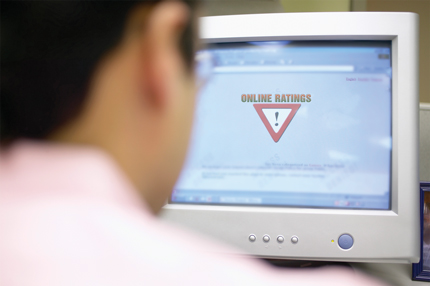Rhode Island practice adopts patient-centered medical home
A patient-centered medical home model lets one physician focus on a proactive, holistic approach of preventive care. The reward was recognition from the National Committee for Quality Assurance.
Where: Aquidneck Medical Associates, Newport and Portsmouth, R.I.
The issue: Improving patient care and increasing reimbursement revenue by adopting a patient-centered medical home model.
Background

Aquidneck Medical Associates is a multi-specialty private practice; the group's primary care physicians include five internists and five pediatricians. In 2005, with partial funding from Blue Cross & Blue Shield of Rhode Island (BCBSRI), Aquidneck implemented an electronic medical records (EMR) system.
“We were already providing quality patient care, but with the number of patients we had and the tremendous volume of data generated, we needed a system to track items like lab results, consultant notes, prescriptions and allergies,” said David S. Gorelick, ACP Member, lead physician on the group's quality improvement and pay-for-performance projects.
“Our partnership with BCBSRI segued from the EMR implementation to piloting a pay-for-performance project that offered compensation for achieving specific quality-of-care performance targets for selected patients,” Dr. Gorelick said. “As part of that project, we received funding to transform our practice to a patient-centered medical home care model and apply for recognition from the National Committee for Quality Assurance (NCQA).”
How it works
The medical home model is based on a multidisciplinary approach in which each patient has an ongoing relationship with a personal physician. The NCQA's Physician Practice Connections–Patient-Centered Medical Home program recognizes practices that meet benchmarks in nine categories, including use of patient self-management support, care coordination, evidence-based guidelines for chronic conditions and performance reporting and improvement. (Detailed information about requirements for recognition is available online. A practice is not required to have an EMR system to gain recognition, but only EMR-equipped offices can achieve the highest level of recognition.
“The NCQA process is an overhaul of the practice infrastructure. You need to analyze and organize every aspect of patient interaction, clinical care and monitoring,” Dr. Gorelick said. “Is there adequate response to the patient's needs: phone calls, sick visits, requests for information and advice? Do you follow up on tests that patients don't get done? Are your patients with diabetes getting their A1c levels and eye exams? You need to create policies and procedures to satisfy every element of the application, and document that you have done so. All physicians and staff need to be guided through the new procedures. Thankfully, it's all relevant to what you need to do to run a practice and take care of patients, so it was very healthy for our group to go through that process.”
Under the terms of a new BCBSRI project, a statewide effort to roll out the patient-centered medical home model, Aquidneck is reimbursed on a per-member-per-month basis for focused care of 400 complex patients and also receives payment for meeting specific process and outcome measures among the broader population of BCBSRI patients. All patients, whether or not they are covered by BCBSRI, receive their care through the medical home model.
The challenges
“Time is the biggest challenge” in moving from a paper-based practice to an NCQA-recognized medical home, said Dr. Gorelick. “Just implementing an EMR is a huge endeavor because you need to research every aspect of the process to find a system that suits your practice, then customize it. I spent the entire summer of 2005 getting the EMR system ready. Then, beginning in March 2009, I logged 250 hours over six months working on the practice transformation and the NCQA application.”
Results
Aquidneck received NCQA recognition as a Level 3 patient-centered medical home in early 2010, becoming the first practice in Rhode Island to achieve the program's highest designation.
Lessons learned
“You need dedicated leaders, both a physician and an IT support person,” said Dr. Gorelick. “You need to look at your workflow during implementation, but it is an ongoing process. The medical home model of care creates increased communication with patients, care team members and specialists. Be prepared to adjust your workflow to accommodate new concepts and approaches.”
Smaller practices may need to join together or work with a physician specialty organization to implement an EMR system or a medical home model of care, Dr. Gorelick said. “The partnership with BCBSRI was essential for us,” he said. “It's such an investment of time and money that we would not have done it without their support.”
How patients benefit
In contrast to the traditional “reactive” model of care, Dr. Gorelick said his patients benefit from a proactive, holistic approach that emphasizes preventive care and ongoing communication and collaboration with clinicians.
“In a patient-centered medical home, patients have improved access to care and information,” said Dr. Gorelick. “Your doctor is in charge, but we have support people to help and communicate with you; when we refer you somewhere, they help to get the referral accomplished and make sure we get the information back. We've incorporated evidence-based standards of care into the EMR system that providers can use right at the point of care. These are lists of questions and prompts for conditions such as alcohol abuse, domestic abuse, and chronic pain management. Patient safety also improves as the EMR alerts physicians to potential drug interactions or allergic reactions.”
Next steps
Aquidneck is establishing a patient portal that will allow patients to access their health information and communicate with their physician via e-mail.
Words of wisdom
“We need to encourage payer and stakeholder support of the process of EMR implementation and transformation of practices from the reactionary symptom-management type of medical care to the holistic approach of the patient-centered medical home,” said Dr. Gorelick. “Train extensively. Seek out funding from quality initiatives. Learn to use the technology to enhance your patient interaction and workflow.”




